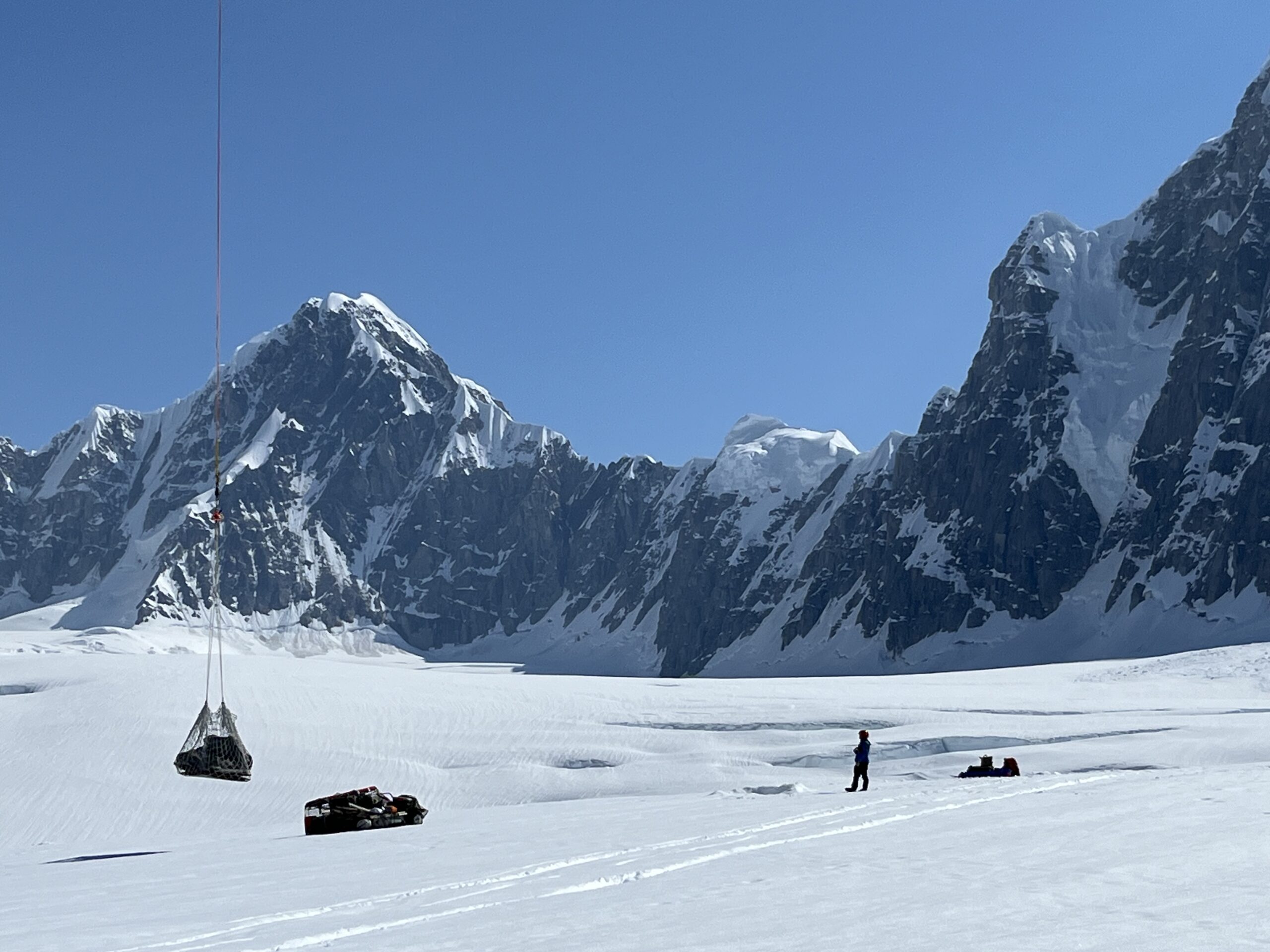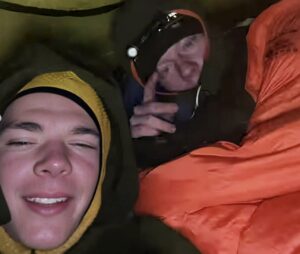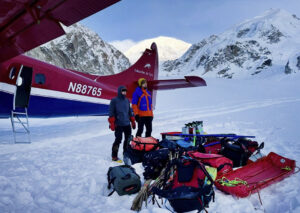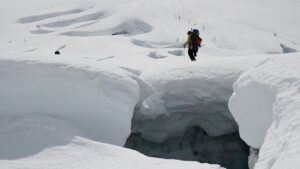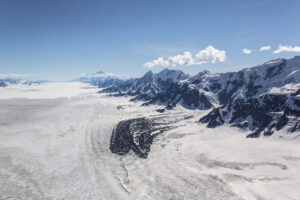Last year’s Denali season featured extended periods of rough weather and a meager summit success rate of just over 30%. This year, things have been smoother, though not without drama. And one remarkable climb stood out.
More summits but still a tough year
Yesterday, the National Park Service (NPS) announced the end of the Denali climbing season. The season’s final 38 climbers flew out on July 9. Many spent an unplanned extra week in the Kahiltna Base Camp because of bad weather that grounded flights.
The season’s final stats look much healthier than last year. There were 974 registered climbers for Denali and 511 summits, giving a summit percentage of 52%. That summit percentage is significantly up from 2023 but way off the highs of 2022, when roughly 70% of registered climbers topped out.
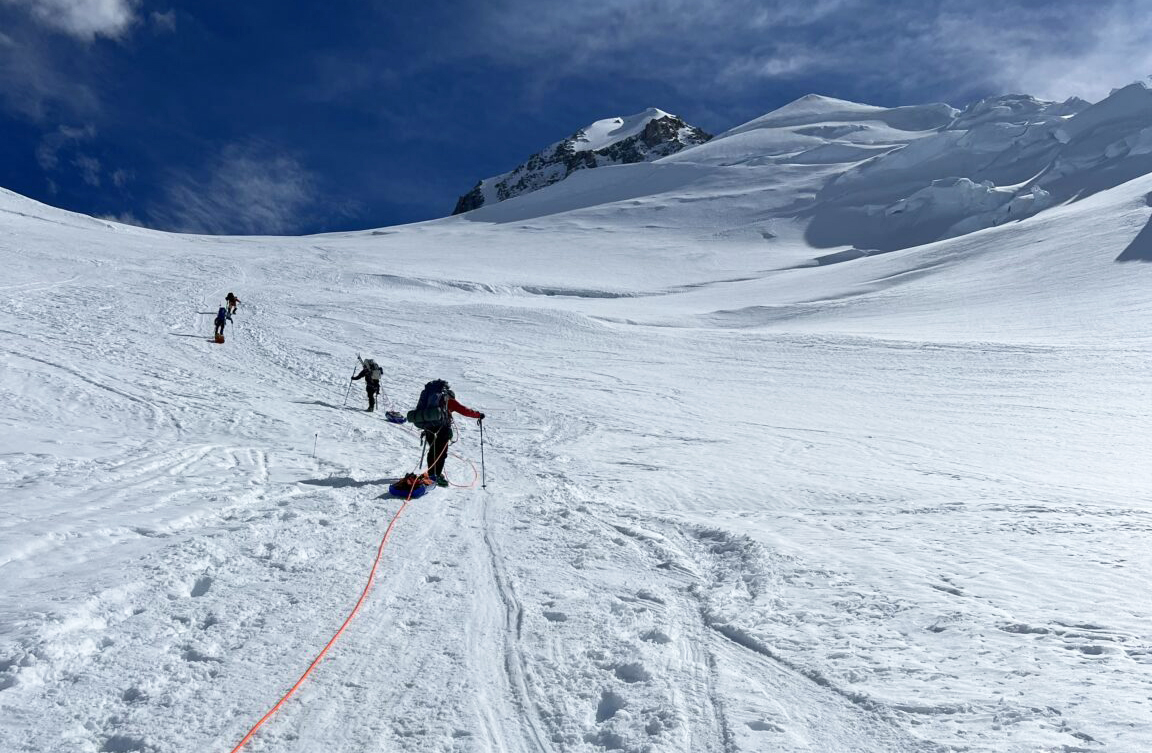
An NPS patrol heads up Motorcycle Hill. Photo: NPS Photo/Taylor Guetschow
A first ascent of a complex link-up
In a climb not marked in Denali’s 2024 statistics, Japanese climbers Subaru Takeda, Genya Takenaka, and Toranosuke Nagayama became the first team to link the West and East Kahiltna peaks with the Cassin Ridge.
Although they didn’t top out, their route involved the entire south ridge of Denali and extended the usual Cassin Ridge route by a remarkable 7.5km, according to local media. After ascending West Kahiltna (3,913m) and East Kahiltna (4,098m), they then descended nearly 500m on an exposed knife-edge ridge to the usual Cassin Ridge starting point at Kahiltna Notch. The link-up took them 10 days in one continuous push.
Their remarkable climb almost didn’t happen. In a turn of events straight out of a Disney movie, after two years of planning, the three climbers’ gear was stolen after they arrived in Anchorage. The next day, Takeda posted a handwritten note asking for information about the theft in a local REI store. Soon after, the team was inundated with kind offers of gear loans from the Alaskan climbing community.
The climb was back on, and the trio certainly made the most of their second chance.
The route has attracted top Japanese mountaineers before. In 2008, Yuto Inoue and Tatsuro Yamada attempted the link-up, only to disappear. A year later the NPS discovered their bodies just above 6,000m.
In 2011, Yasuhiro Hanatani and Kei Taniguchi tried the same route but turned back.
Rescue partly succeeds
Besides this remarkable climb, the season saw several high-altitude medical emergencies, including a prolonged rescue near the summit.
Overwhelmed by strafing winds and clouds on the 6,190m peak, three Malaysian climbers had called for rescue via satellite message on May 28. One climber managed to descend to a lower camp, where he met with rescue services. The other two were stuck in a snow cave just below 6,000m in an area known as the Football Field.
After a period of unflyable weather, a helicopter pilot and climbing ranger extracted one surviving expedition member from the snow shelter on June 1. The operation used a short-haul rescue basket dangling from a rope line.
The surviving climber informed rescuers that his partner had died two days prior. The NPS announced that he died from “exposure and altitude illness.”
Other recent medical emergencies include a guided client who came down with HAPE last week. The NPS evacuated the individual from a high camp.
In late June, a guide “suddenly and temporarily lost consciousness at elevation.” The guide descended to 4,300m under his own power but was then evacuated to Talkeetna for tests.
Mount Foraker
Mount Foraker is never particularly busy and typically ends with a lower summit percentage than Denali. But this year’s summit percentage is particularly grisly: 0%. Not one of the 27 registered climbers managed to summit.
